Boy George is well known as a pop star, DJ and fashion designer who is remembered for his Eighties band Culture Club.
I would describe myself as the kind of pink sheep of the family. I definitely growing up had a real sense of being different, of not really having a place not only within my family but just in the world
George was born in Sidcup, Kent but grew up in South London. We can find his birth record by using TheGenealogist, and then by clicking the Parents’ Potential Marriage SmartSearch from this result we can find the marriage of his parents in 1959 Woolwich. George was always aware, however, that his family’s roots were definitely Irish.
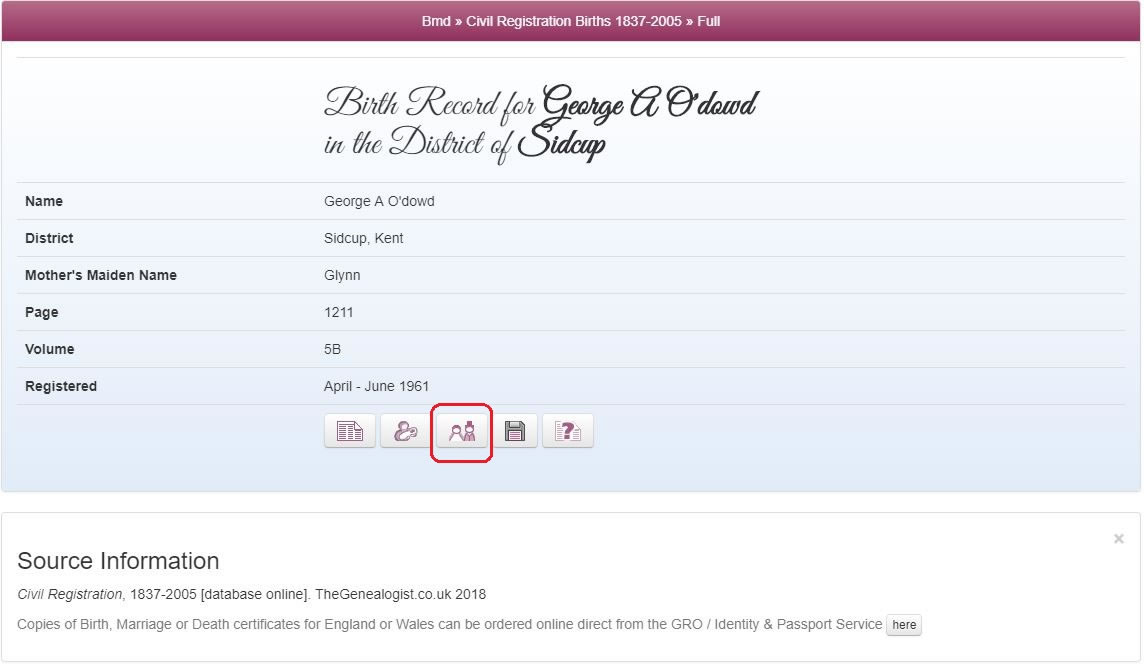
Growing up in the Seventies, being Irish, you were really aware of the IRA bombings, and innocent people were being killed, and they were such big news, you were made aware of the fact that your family were Irish
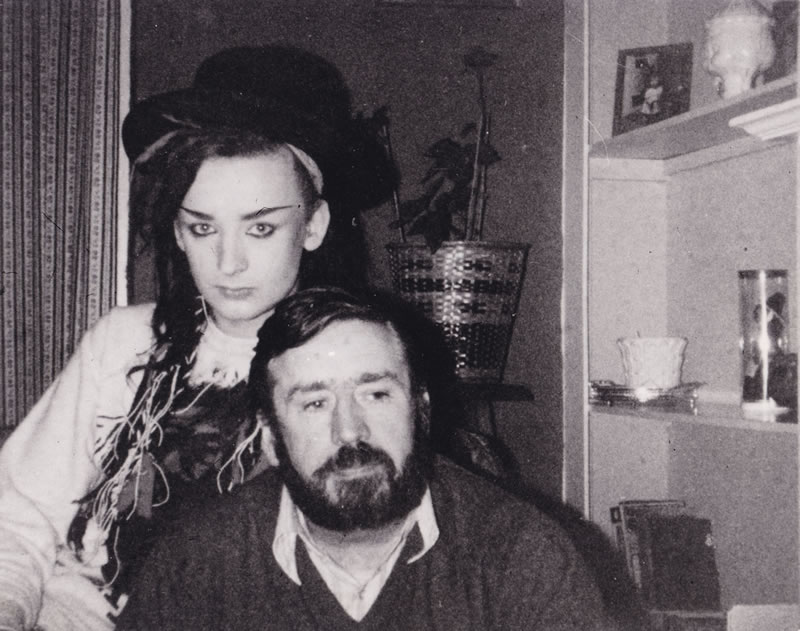
George’s dad Jeremiah passed away in 2001 though his mother Dinah is still alive. Part of the reason for George embarking on this family history journey is for his mother in order to discover more about her own mother’s early life in Dublin:
My grandmother was found wandering when she was a very young child in the streets of Ireland, and she was put in a children’s home. Other than that it was just kind of fragments, really
And George is drawn to find out about another family mystery:
When we were growing up, we used to think that one of our relatives was Kevin Barry, who was a very famous Irish freedom fighter, but it turns out one of my mother’s cousins was hung with him in Mountjoy Jail
George expects this quest will not reveal many happy stories:
I think that there will be a lot of sadness. A lot of mascara running, even though I’m not wearing any make-up!
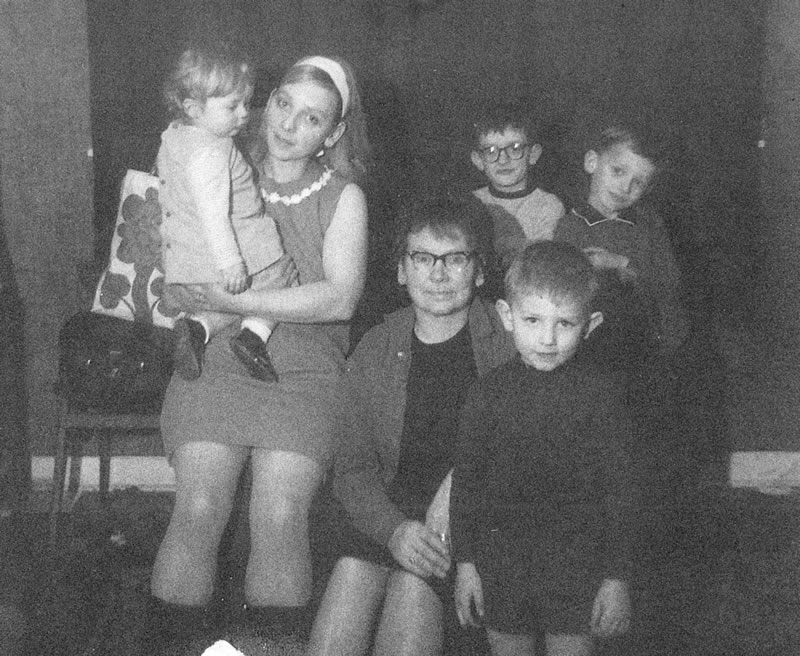
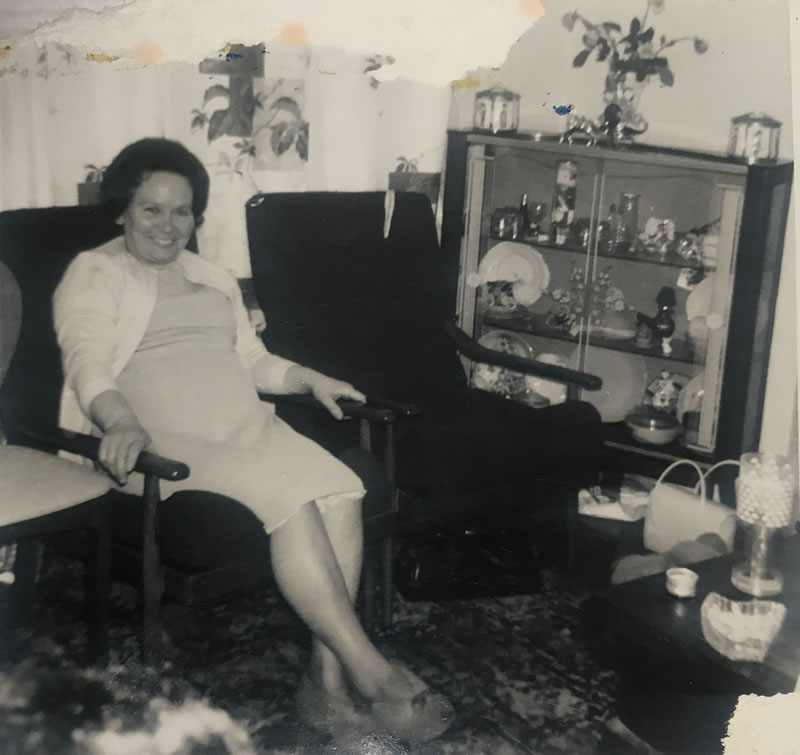
The programme follows George as he visits his mum Dinah in South London, where he asks about her mother his grandmother Bridget. Dinah and George reminisce about her, which includes George remembering that his grandmother could be quite strict. Dinah’s view was that this may have been because of events that happened in her childhood. Dinah tells George that his grandmother never used to talk about it and she shows George an order of detention to Goldenbridge industrial school in Dublin in 1919 for Bridget. He reads the reason:
‘wandering and not having any visible means of subsistence’. So she was six years old!
George is shocked by what he reads. He and Dinah then talk about one of the few accounts that Bridget had spoken of she had been made to wear the damp sheet as a punishment after wetting the bed. George wants to find out more for his Mum and so he travels to Dublin to meet with historian Catriona Crowe near the spot where his grandmother Bridget was discovered wandering. He is upset to be told that his six-year-old grandmother was virtually outside her own house when picked up by the NSPCC.
She was kind of nabbed like a stray dog!
Catriona and George visit the Dublin Tenement Museum at 14 Henrietta Street, where he can get an idea of the type of conditions Bridget and her family would have lived in. George sees one room furnished with a bed and basic furniture where up to eight people at one time would have lived, washed and eaten. Catriona then shows George various photographs of the deprived North Dublin area around the time in which Bridget would have been a child. The historian particularly draws George’s attention to the children in the photos.
Catriona then goes on to produce some documents relating to George’s grandmother Bridget. First of all he sees her birth certificate from 1913, from this he discovers that her mother’s name was Kate, and that her father’s name was John. Next he looks at a North Dublin workhouse record from 1915 and this reveals that John Kinahan was admitted for hospital treatment. From this George realises that his great-grandfather was in poor health. The next document Catriona shows him is a death certificate for George’s great-grandmother Kate from 1922. In this year she would have been 45. This record is rapidly followed by another death certificate it is for his great-grandfather John who had died four years later, aged only 41. George realises from this that both of Bridget’s parents were alive at the time that their daughter had been picked up from the streets. They had, however, died a few years later while she was in the industrial school. In the Who Do You Think You Are? episode Catriona suggests that Bridget’s parents might have thought that their child was better off in an industrial school. George responds strongly to this:
Access Over a Billion Records
Try a four-month Diamond subscription and we’ll apply a lifetime discount making it just £44.95 (standard price £64.95). You’ll gain access to all of our exclusive record collections and unique search tools (Along with Censuses, BMDs, Wills and more), providing you with the best resources online to discover your family history story.
We’ll also give you a free 12-month subscription to Discover Your Ancestors online magazine (worth £24.99), so you can read more great Family History research articles like this!
I think that however bad things are, when you’re with people that love you, even the worst conditions can be bearable. You know, I think that you’re always better off with your family
The following day, the show takes George to visit the site of what was the Goldenbridge Convent Industrial School. On the way to see it he admits to feeling apprehensive.
I feel it’s going to be quite an emotional experience to be in that space
George meets historian Lindsey Earner-Byrne inside the convent chapel and is shown a print that depicts the girls in the industrial school lace-making. He is then able to see an account written by a girl at the school detailing the punishment for bed-wetting. This confirms what he and his mother had heard about his grandmother Bridget’s experience. Lindsey then shows George a record of an entry specifically about Bridget that covers her ten years spent at Goldenbridge from 1919 to 1929. While it has very little detail, the report includes adjectives including “ambitious”, “painstaking” and “very bright” to describe Bridget.
It’s pretty tragic. There is a sense that she just kind of got on with it… she’s definitely a survivor, but when you hear these stories, you kind of realise why she was the way she was
George sees from the document that his grandmother left Goldenbridge in 1929 and went to work as a housemaid at St Vincent’s Hospital in Dublin. Three years later, he reads that she married his grandfather, Francis Glynn. The viewers of the genealogy programme see George reflecting on what’s he’s learnt so far about his grandmother Bridget’s experiences:
Finding out that she might have been in this very chapel is quite… it feels good… Being here it makes me understand why she was the person that she was… she was obviously hiding a lot of pain – but she got on with it… Yeah, I’m proud of her. I’m really proud of her
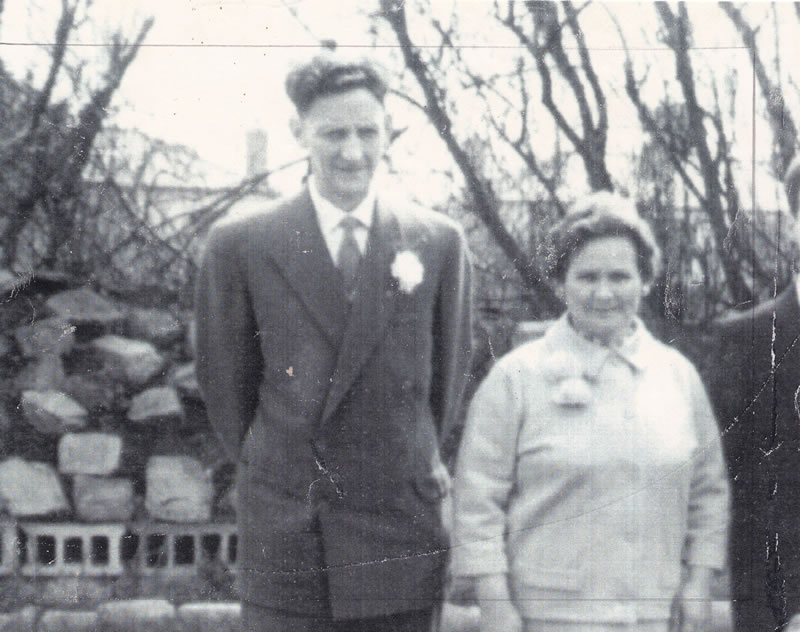
George continues with his family history exploration of his mother’s side of the family, as he wants to find the connection to Kevin Barry that he has heard of in the family stories. To see if he can find out more, he visits his Aunt Phyllis.
Auntie Phyllis is like Batman or Wonderman – she always turns up. You know, when my Mum’s been sick, or when I’ve been in trouble, you know, Phyllis is always there.

George and his Aunt Phyllis look at some photographs that she has of his great-grandparents Richard and Molly Glynn. She is able to explain that Richard had fought for the British Army, something that wasn’t unusual for a working class man looking for a steady income. It is revealed that Molly had in fact been married to Richard’s brother before Richard. It was Molly’s daughter from this marriage, Annie, who had married a republican named Thomas Bryan. Phyllis is able to tell George that Thomas was hung by the British authorities and then buried beside Kevin Barry. Kevin Barry’s name is very familiar to George as he recalls discovering a ‘Freedom Fighters’ album of Irish rebel songs and playing it when he was growing up in South London.

Being now aware that it had been his great-aunt Annie’s husband, Thomas Bryan who had been executed by the British, George looks online for their marriage certificate. He discovers that Annie and Thomas married in November 1920, and they were living at 14 Henrietta Street…
So they actually lived in 14 Henrietta Street where we went the other day, to that museum. That’s trippy – I wish I’d known that when I was there. Wow. Now it takes on a whole other frequency!
Returning back to 14 Henrietta Street, George meets with historian Ciarán Wallace to see what more he can find out about the couple. He sees a photo of them for the first time. The Prison records the researcher has found reveals that Thomas was arrested in 1917, which was three years before he married Annie. The arrest was as a result of having taken part in a drill of the Irish Volunteers, a precursor to the IRA.
She definitely went for a bad boy!… It seems to be a family tradition.
It was only a few months after his wedding to Annie that Thomas Bryan was arrested once again during a raid in Drumcondra during the Irish War of Independence. The British had imposed martial law on the country and being arrested as an Irish Volunteer was a serious affair for Thomas Bryan. He was incarcerated in Kilmainham Gaol, and so this is where George heads next in the TV programme.
At Kilmainham Gaol, which has been preserved as a museum, historian Aoife Torpey takes George to see an example of the dark, basic, prison cell that Thomas Bryan would have had to endure. In the museum’s archive, Aoife shows George the chilling document pronouncing Thomas’s death sentence. George also reads a letter to his great-grandfather Richard Glynn written by Thomas Bryan. The letter reveals the close relationship between the two men. George notes Thomas’s sensitivity in the communication as he puts aside his own fear to worry about the impact his death will have on his ‘dear little wife’. The next record George is shown, a poem written by Thomas Bryan while in prison, has an even greater impact on the celebrity…
Access Over a Billion Records
Subscribe to our newsletter, filled with more captivating articles, expert tips, and special offers.
‘On a bed made of plants, a pillow of hair, I lie down to sleep, but I find no rest there. I’m thinking of home and the joys of my life, and the sweet little colleen I now call my wife… I ponder all, I’m nearly bereft. My life or my honour, which will be left’. It’s a good poem. ‘I plead and I pray to my mother on high, to ask God to save me, for I don’t want to die… But to live for my wife and for the dear little child’ – he had a child?
George is shocked to discover that Annie was pregnant at the time that Thomas was arrested.
The fact that my great-aunt Annie was pregnant, you know, what a thing – to find out that they’ve been married four months, he was now facing the hangman and he was having a kid… how human do you want to get? You know, it’s just the most awful thing to find out.
The next document that George is shown is an official one the letter sent to the Governor of Mountjoy Prison that details the date and time that Thomas’s execution was to take place.
Mountjoy prison still functions as a prison today. The Hang Room, however, where Thomas Bryan was executed has been preserved and so inside the Execution Chamber, we see George in the programme saying a prayer and reflecting:
What a place. I’ll be really honest and say I actually feel quite angry, at the moment. My overall feeling is of anger. It’s just awful. It’s like macabre theatre.
Thomas Bryan and the five other IRA men were executed on that day in 1921. They were buried in unmarked graves within the prison walls along with four other executed prisoners. This included Kevin Barry, who had been hanged the year before, and over time they became known as the Forgotten Ten until in 2001 that changed when their bodies were exhumed and taken to Glasnevin Cemetery. Here they were reburied with state honours by the Republic of Ireland. After paying his respects at Thomas Bryan’s grave in Glasnevin Cemetery “I’m proud and I’m sad” George then visits the museum to discover more about what happened to Annie and Thomas’s child.
Glasnevin Historian Conor Dodd shows George an internment order which reveals that Thomas Bryan Jr tragically died at only one day old. His death on Thursday 10th March 1921 was just four days before his father was hanged in prison. The tragic story astounds George. In just one week his family had to deal with the death of two members and then Annie’s own burial record reveals that she died nine years later, having never married again.
George finds Annie’s grave and pays his respects.
Having now found out what she endured, it’s just unimaginable to think that while her husband was waiting to be hung, she lost their first child. And we’ll never know whether he knew. Whether he went to his death knowing that his firstborn had already died… I really hope he didn’t know. I really, really hope he didn’t know. It’s such an incredible story. And mad that nobody’s ever talked about it. They will now – I shall make sure they do.
George’s final visit in the family history show takes him to the ‘Gravediggers’ pub by Glasnevin Cemetery. Here he joins up with the Irish band Lankum to sing the rebel song that he can recall from his childhood. The emotional song, ‘Kevin Barry’, has even more significance for George now that he knows the connection to his family and their story.
And to be able to walk in those footsteps, and to actually find out the family history has been very, very enlightening and powerful for me.
This story’s like a great Irish song – you know, it’s the sort of thing you’d hear someone singing at a funeral or a family wedding, like an old drunk Irishman singing this traditional lament, and that’s really what this story is like – it’s like a really sad song… My family’s association to really important parts of Irish history is a revelation.

Sources:
Press Information from IJPR on behalf of the programme makers, Wall to Wall Media
Extra research and record images from TheGenealogist.co.uk
Photos from BBC Images






